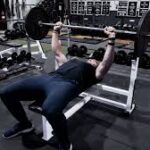Advertisement
Key Takeaways:
- Many Australian families are switching to tougher vans built for long-distance and off-road travel
- Comfort, safety, and smart layouts are driving demand for family-specific caravan designs
- Features like off-grid power, internal bathrooms, and separate sleeping zones are now common
- The trend reflects a broader move toward mobile living and long-term travel flexibility
Australia’s love of road travel is no passing phase. For many families, it’s the preferred way to explore, unwind, and spend time together. But a noticeable shift is happening across campsites, rest stops, and regional highways. More families are stepping up to touring vans built with serious capability in mind. These aren’t the simple caravans of past decades — they’re tough, modern homes on wheels that can handle a rough track just as easily as a sealed road. The growing trend isn’t about chasing luxury for its own sake. It’s about practicality, safety, and creating more flexible ways to travel with kids, especially in remote or regional areas.
That shift is reshaping expectations across the caravan market. Whether it’s a week up the coast or a year-long loop of the country, families want gear that can keep up. And the vans rolling out of today’s manufacturers reflect that demand in every panel, fixture, and finish.
Tough Conditions Call for Tough Builds
It doesn’t take long on the road to realise how varied Australia’s terrain can be. Long sealed highways quickly give way to corrugated gravel, rocky inclines, or clay roads that turn treacherous with the first drop of rain. For families aiming to explore places beyond the typical caravan park, a standard build just isn’t enough.
That’s where tougher vans come in — full-sized tourers with reinforced chassis, raised suspensions, and underbody protection. These builds are made to survive the kind of punishment that would rattle older caravans apart. It’s not only about where the van can go but how it performs day after day, kilometre after kilometre. When you’re towing through heat, dust, and remote country with kids in the back seat, reliability isn’t optional.
Many of these vans also feature upgrades that make a significant difference in practice, including high clearance for creek crossings, stone guards to protect the front panels, and stronger couplings designed for off-road articulation. These aren’t flashy add-ons — they’re the kinds of features that make remote travel possible and safer for families who don’t want to be limited by sealed roads.
Why Families Are Making the Upgrade
Ask anyone who’s done a long-haul trip with kids and they’ll tell you: comfort and reliability matter. But for a growing number of families, those features now go hand in hand with durability. A tougher van doesn’t just mean you’ll arrive — it means the entire trip runs smoother. That’s especially true on extended trips through regions with limited services or unpredictable conditions.
Families are also shifting away from short, holiday-style trips and toward more immersive travel experiences. A van that can go off-grid for days or weeks at a time needs to be self-sufficient, well-insulated, and ready for more than fair-weather touring. The reality of towing a family-sized van on unsealed roads means strength and weight distribution are critical. Brands have responded with serious builds that don’t sacrifice comfort for capability.
For those based in major cities, there’s growing access to high-performance models locally. A titanium hardcore caravan in Sydney exemplifies how far the market has progressed. These vans aren’t just dressed up to look tough. They’re engineered to handle serious touring, with features built around real-world family use — not just aesthetics.
How Design Has Evolved to Meet Real Family Needs
Durability is only part of the equation. For families spending a significant amount of time on the road, interior design has become just as important as structural integrity. Older vans often treated the living space as an afterthought. Today’s models take a more thoughtful approach, especially where kids are involved.
Separate sleeping zones have become a common request. Bunk beds are no longer crammed in as an afterthought — they’re integrated into the layout with doors, lighting, and airflow in mind. Parents are looking for real beds that don’t require folding or rearranging the lounge every night. The kitchen needs to be usable, not just a token inclusion. Proper bench space, decent-sized fridges, and working ovens are now expected, particularly when families plan to travel through areas without access to food stops.
Storage has also evolved. Touring with kids means packing more gear — clothes, schoolwork, outdoor equipment, and plenty of food. Designers have responded with smarter cabinetry, accessible storage hatches, and layouts that make daily life more functional. It’s about fitting out the van like a real home, not a weekend escape pod.
Bathroom facilities are another non-negotiable for many families. Internal toilets and showers were once rare in smaller vans, but they’re now standard in models designed for extended travel. For those staying away from caravan parks, especially in regional or remote areas, having these comforts on board isn’t a luxury — it’s a necessity. With better insulation, climate control, and ventilation, newer vans are becoming increasingly livable across various seasons.
Choosing Capability Without Compromise
One of the misconceptions around heavy-duty caravans is that you have to sacrifice comfort or towability for strength. However, the industry has since moved beyond that idea. Advances in materials and engineering now mean you can have a tough, off-road capable van without it being a beast to tow or overly heavy on fuel.
Independent suspension systems, for example, are becoming more common in family-sized vans. They offer smoother towing and better handling across uneven ground. Composite wall panels and lightweight framing materials reduce weight without compromising strength. Many vans are now built with aerodynamic profiles that make a significant difference on long drives, especially when wind resistance becomes a factor.
Off-grid capability is also changing what families look for in a home. Solar setups, lithium battery systems, and larger freshwater tanks are all being included as standard in many touring vans. That means families can stay in remote areas for longer, without relying on powered sites or daily top-ups. For families who homeschool or work remotely, this kind of flexibility is a game-changer.
There’s also a shift in how these vans look and feel. The latest models avoid the boxy, dated interiors of older designs. They offer clean finishes, full-sized appliances, and spaces that feel open and usable, even with kids moving around. With many models now tailored to Australian conditions, it’s becoming easier to find a van that suits both your route and lifestyle.
What This Means for the Future of Family Travel
As more families opt for road travel as a flexible and cost-effective way to explore Australia, the demand for capable vans is expected to grow. Manufacturers have taken note, pushing beyond cosmetic upgrades to develop models that truly support long-term family use. This means better layouts, improved safety features, and tech that actually matters when you’re far from the nearest town.
It’s also influencing how families approach their travel plans. Where once the idea of full-time road life felt out of reach, it’s now seen as an achievable lifestyle choice. Better van designs are making it possible to live comfortably on the road without giving up essential routines. Kids can study at a table with a power source, meals can be cooked properly, and bad weather doesn’t mean discomfort or cramped living.
The road trip is no longer just a holiday format — it’s becoming a form of mobile living. As that shift continues, the expectation for smarter, tougher, and more family-friendly vans will only strengthen. With a growing number of local options and design features tailored to real-life use, families can now choose vans that suit their preferred travel style, not just their destination.











